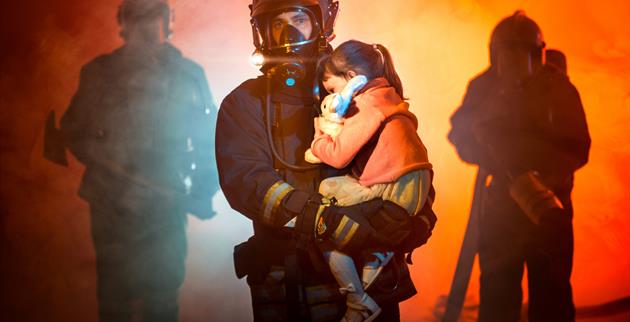Know the Drill: Practice Your Fire Escape Plan


Follow the steps below to make sure everyone in your home is prepared with what to do in case of a home fire.
Know the Drill: Practice Your Fire Escape Plan
According to the National Fire Prevention Agency, 71% of Americans have an escape plan in case of a fire, but only 47% of those have actually practiced it!
The good news is that creating and practicing a home fire escape plan is really simple! Follow the steps below to make sure everyone in your home is prepared with what to do in case of a home fire.
- Make a written home fire escape plan and ensure your family practices getting out of the home in under 2 minutes
- Check that you have smoke alarms in all the right places and test them twice a year
- Learn the best practices for home fire safety in your kitchen, around the fireplace and more http://makesafehappen.com/articles/children-and-fire-safety
- To learn more about fire safety, go to the U.S. Fire Administration and plan your home fire escape, download a home safety checklist, and have a home fire drill.
Make an Escape Plan
It is important to have a plan when there are children in your home. Children sometimes need help getting out of the house. They may not know how to escape or what to do unless an adult shows them.
- Have a plan for young children who cannot get outside by themselves. You will need to wake babies and very young children and help them get out. In your plan, talk about who will help each child get out safely.
- It is important to learn two ways out of every room in your home, in case one exit is blocked or dangerous to use.
- Remember, if there is smoke, you need to get low and go to your exits. Practice getting low and moving to your exits.
- Choose a safe meeting place a safe distance from your home. Children should know what to do when they hear a smoke alarm and there is no adult around. Help them practice going to the outside meeting place. Teach them to never go back inside a building that is on fire.
- Have a home fire drill at least twice a year; everyone can practice what to do if the smoke alarm sounds.
Children and Fire Safety
- Children can become scared and confused during emergencies, so teach them to never hide from firefighters.
- Teach children to NEVER go back inside a burning building. Once they are out, stay out!
- Teach your child to get low and crawl on the ground; the air is less smoky the closer to the ground.
- Show a child how to use the back of their hand to check doors for heat before opening and to use a different way out if the door is hot.
- If your child needs to use an escape ladder, show them where you keep it and practice how to use it.
Conduct a Home Fire Drill
Fires can start anywhere in the home and at any time, so run through the plan at different times of the day or night, and practice different ways out.
Step 1. Know where to go: Pick a safe meeting place that’s near your home and a safe distance away. Explain to your family that when the smoke alarm beeps, they need to get out of the house quickly and meet at that safety spot.
Step 2. Check your smoke alarms: Test your smoke alarms each month with your kids so they know the sound. Make sure there’s a smoke alarm on every level of your home, and one in each bedroom.
Step 3. Do the drill: Have kids head to their bedrooms and wait for the drill to begin. For children under 6 years old, assign adults to help anyone who’ll need it. Put one adult in charge of sounding the smoke alarm and running the drill. Next, sound the smoke alarm, start the timer and have everyone evacuate the home to the safety spot. Once everyone gets to the safe meeting place, stop the timer. Practice until your family is able to get to the safety spot in under two minutes! In a real fire, get to the safe meeting place, then call 911 and keep everyone close until firefighters arrive.
This information is intended for educational purposes only and is not legal advice and/or an authoritative guide.